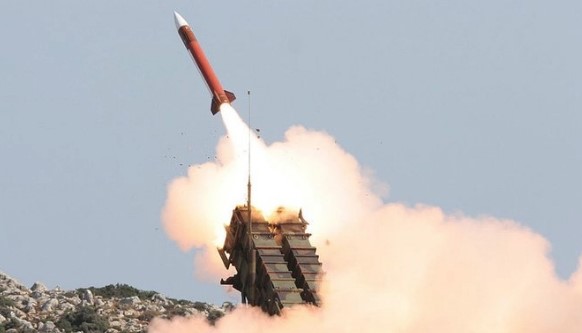Patriot SAMs, long considered one of the strongest shields in modern air defense, are now facing a serious challenge in Ukraine. A recent report by the U.S. Defense Intelligence Agency confirmed that these systems are struggling against Russia’s newly modified ballistic missiles.
Falling Effectiveness Of Patriot SAMs
These Russian missiles are no longer flying in simple straight paths. Instead, they are able to change direction mid-flight, making them far harder to intercept. In recent attacks, Ukraine’s air defenses using Patriot SAMs have only managed to stop a fraction of incoming missiles.
For example, Ukrainian defenses brought down only one missile out of seven in one strike. In another, they intercepted or neutralized just over half of the 13 missiles launched. These results show that the success rate of Patriot SAMs has steeply declined, even though people earlier regarded them as reliable protectors of cities and military sites.
Zelensky Demands 10 Patriots—But Will Europe Pay the Price in Air Defence Readiness?
Ukraine depends heavily on these interceptors to defend its skies. But the changing tactics of Russia mean that missiles are slipping through and causing destruction despite the presence of advanced Patriot SAMs.
Strain On Patriot SAMs Missile Supplies
The concern is not just about falling effectiveness but also about availability. The stockpile of Patriot interceptors in the United States has dropped to alarmingly low levels. Reports revealed that America had only about 25% of the interceptors it needed to cover its own military plans.
This shortage has raised alarm in Washington, as the heavy use of Patriot SAMs in conflicts around the world has drained reserves faster than the U.S. could replace them. Ukraine, fully dependent on American supplies, now faces the brunt of this crisis.
🔥 NATO ramps up weapons flow to Ukraine as Trump warns Russia — Kremlin says it’s not afraid
So far, the United States and European allies have supplied Ukraine with several Patriot SAMs batteries. However, the manufacturer produces only 500 to 600 interceptors per year, making resupply difficult as Ukraine uses large numbers of them regularly.
Russia has worsened this strain by launching hundreds of drones and missiles each week in increasing barrages. The demand for Patriot interceptors is now much higher than the supply, leaving Ukrainian defenses under immense pressure.
The Russian Edge With Modified Missiles
Russia’s ballistic missile strategy has taken a sharp turn with modifications to its weapons. Many of these missiles now follow what experts describe as “quasi-ballistic” flight paths. Unlike traditional ballistic missiles that move in a predictable arc, these can perform sudden maneuvers, making them difficult targets for interception software used by Patriot SAMs.
Some missiles are also reported to carry decoy systems designed to confuse air defense radars. This means the Patriot batteries may lock onto a false target, while the real missile continues toward its intended destination.
Short-range ballistic missiles such as the Iskander-M and North Korean-origin KN-23 have been at the center of this shift. These are the most commonly used in Russia’s attacks and are showing worrying success against Patriot defenses. In certain strikes, Ukraine managed to intercept about two-thirds of them. But experts note that even this success rate is falling as newer modifications are introduced.
🛡️ Norway turbocharges Ukraine’s missile shield—Patriot systems fast-tracked with Germany
Ukraine once had older Soviet-made air defense systems like the S-300 series, which offered limited ballistic missile defense. However, these are either depleted or no longer reliable, leaving Patriot SAMs as the main line of defense. The heavy reliance on one system has allowed Russia to study its strengths and weaknesses over time, leading to the development of improved countermeasures.
The problem extends beyond Ukraine. Countries such as Israel, Japan, Taiwan, and South Korea also depend on Patriot SAMs as key components of their defense networks. With adversaries like Iran, China, and North Korea possessing large missile arsenals, the declining effectiveness of these systems has become a matter of concern worldwide.
The situation in Ukraine highlights two critical issues: the rapid evolution of missile technology on one side and the limited ability to produce enough interceptors on the other. While Patriot SAMs remain advanced, the growing adaptability of Russian missiles has reduced their effectiveness, putting Ukraine’s air defense under severe strain.

